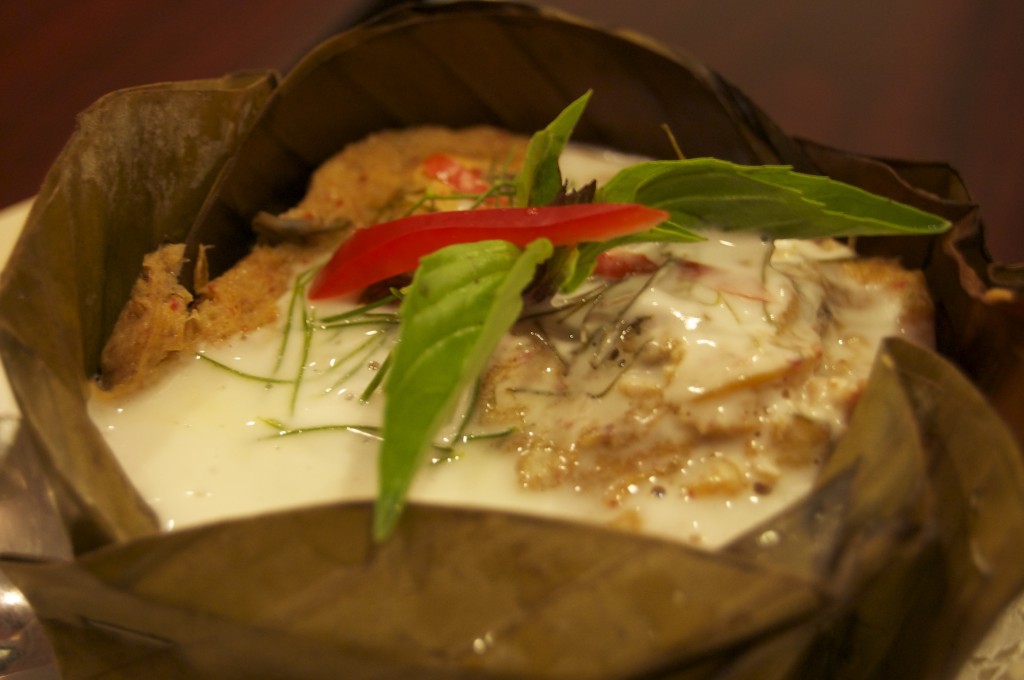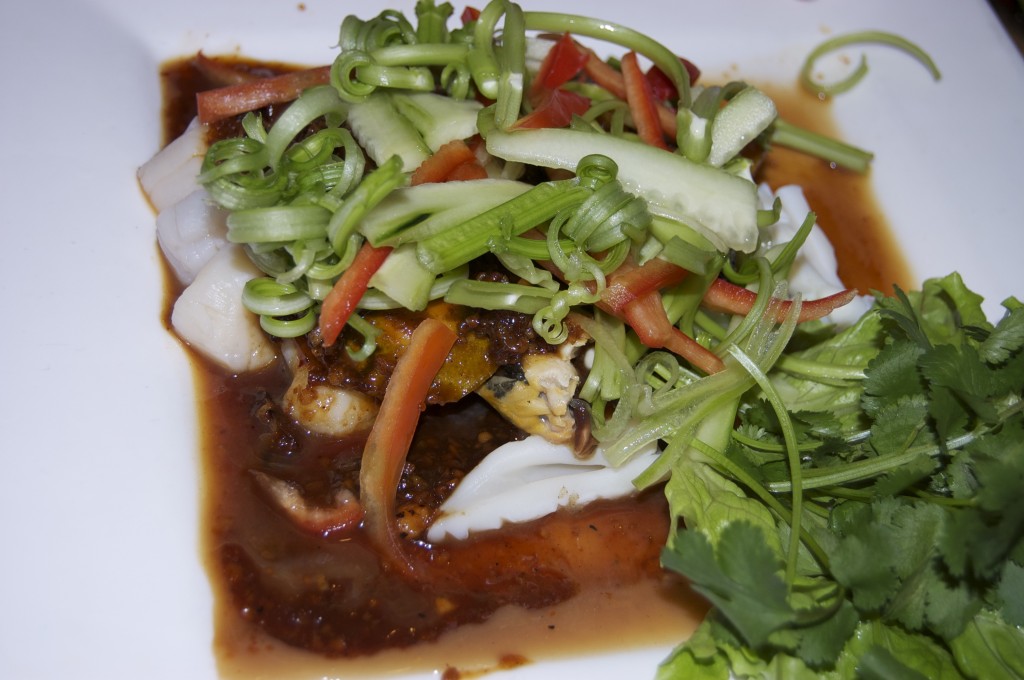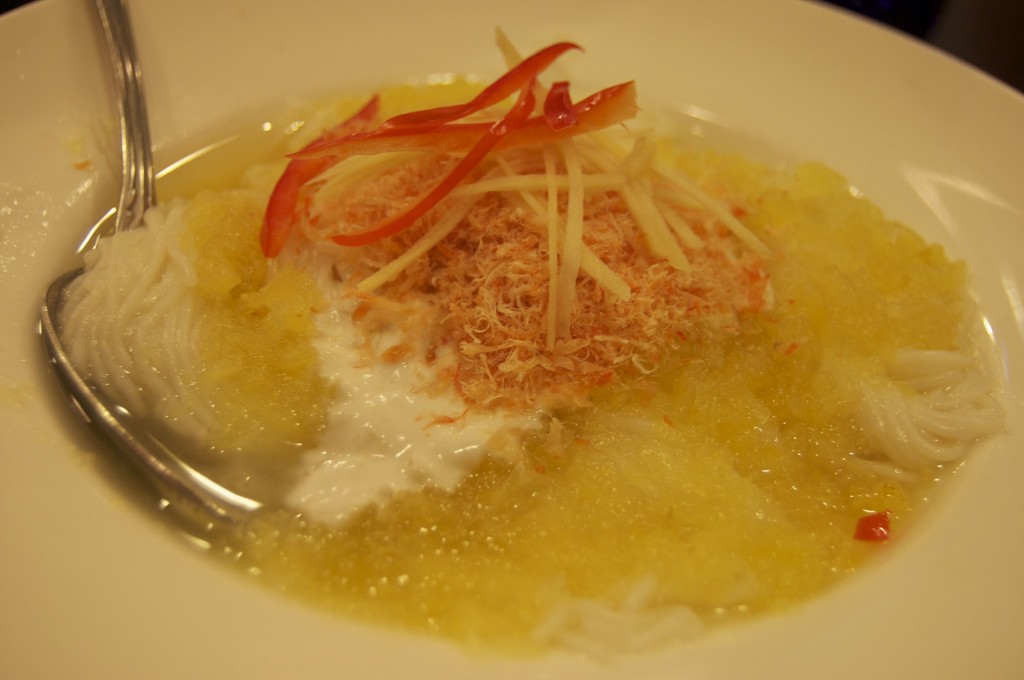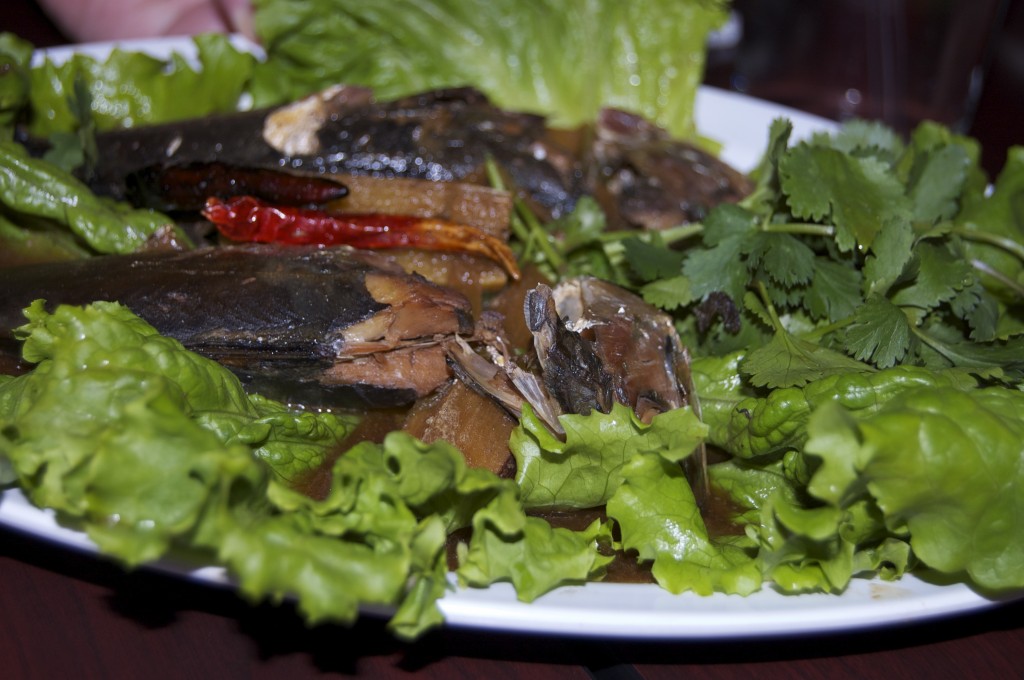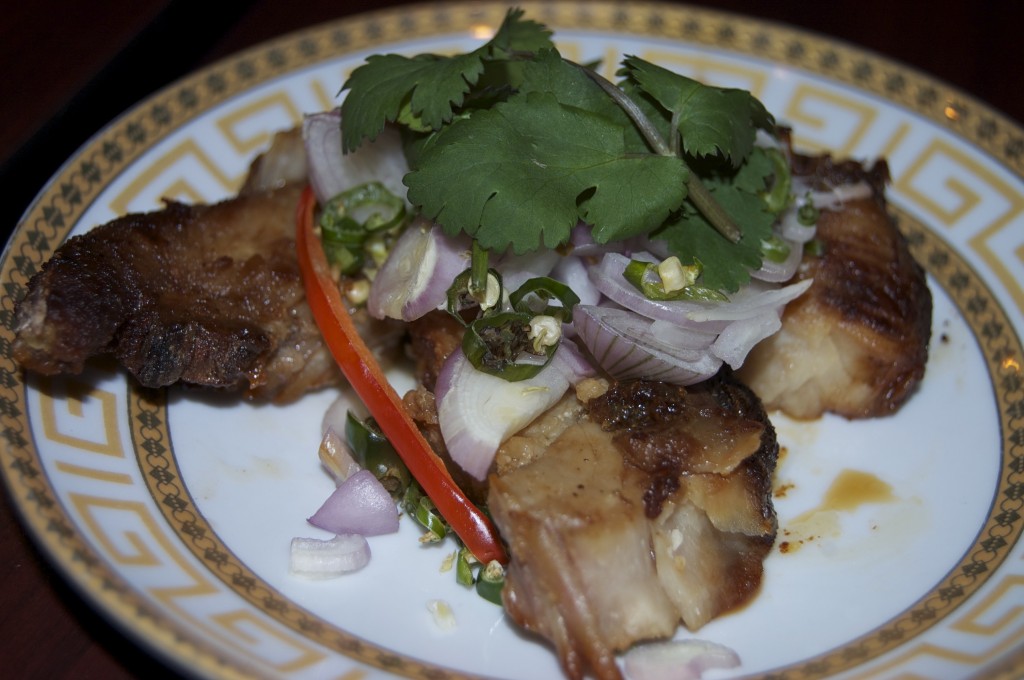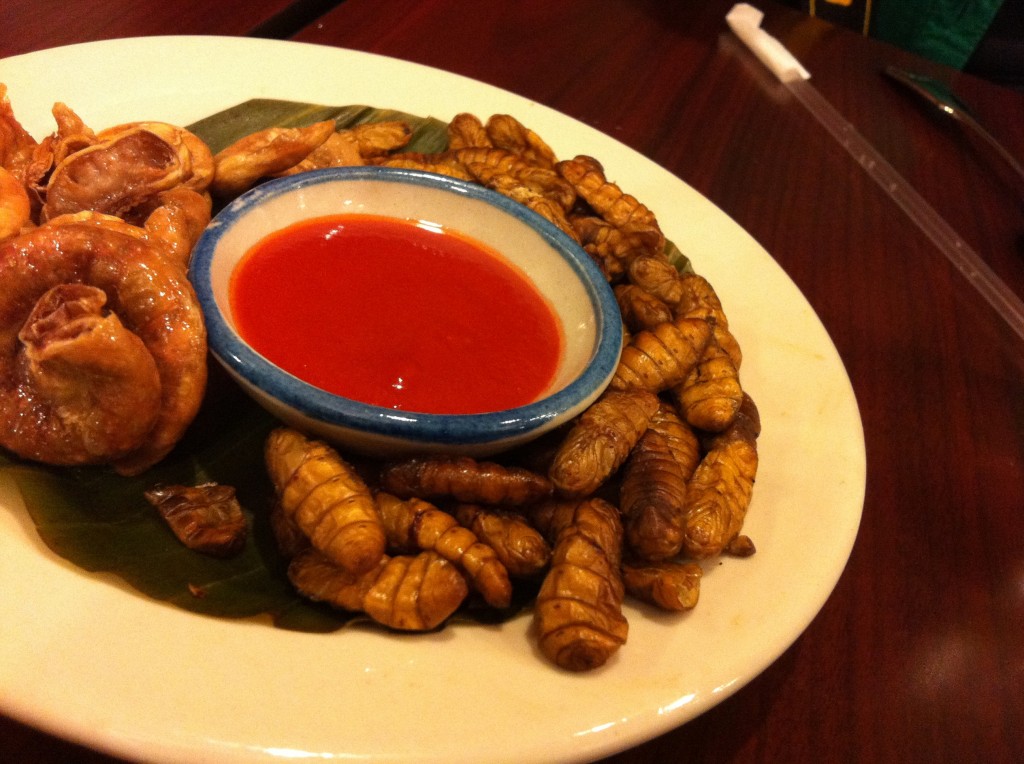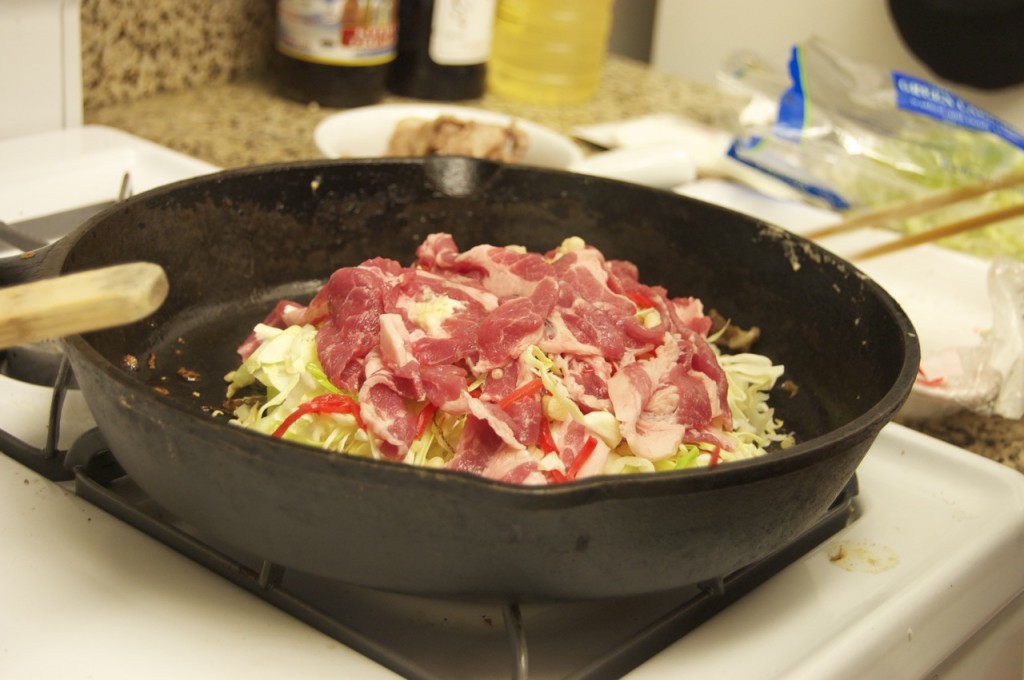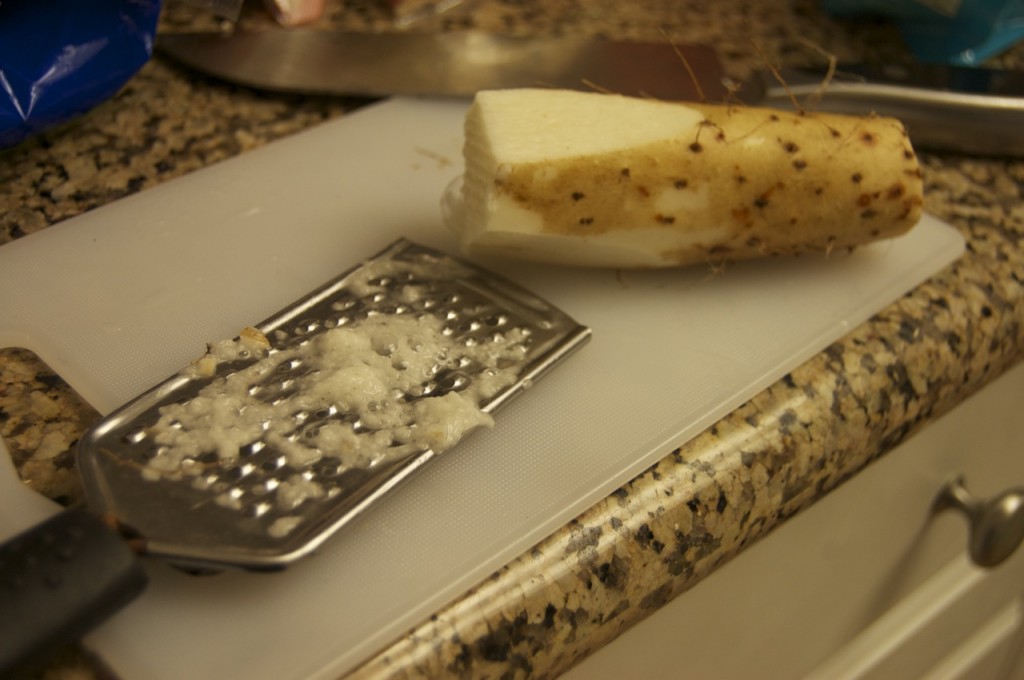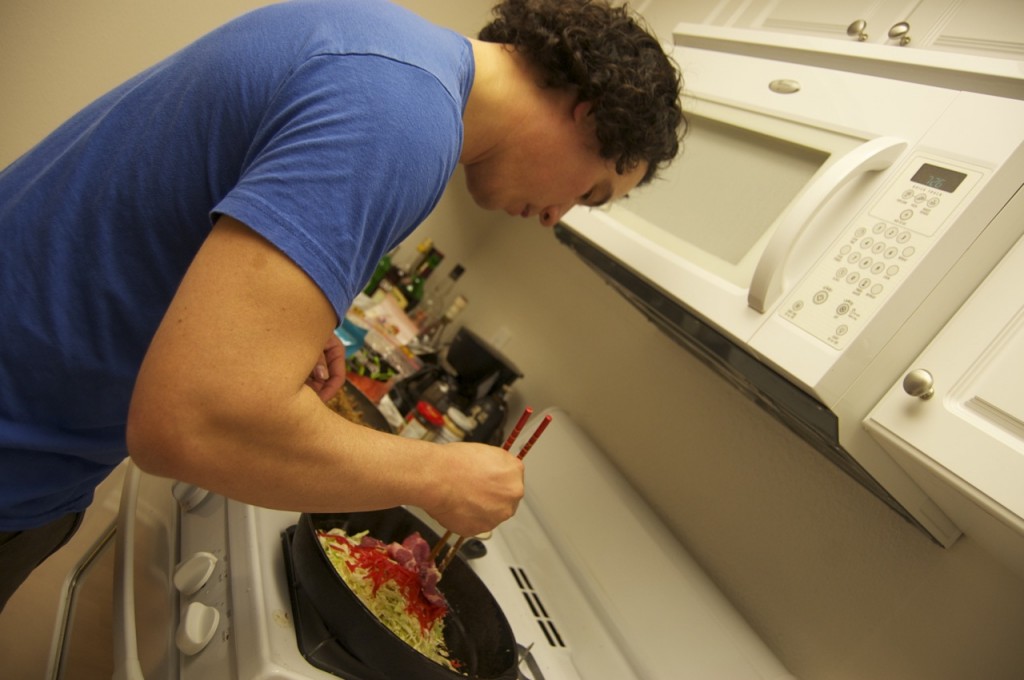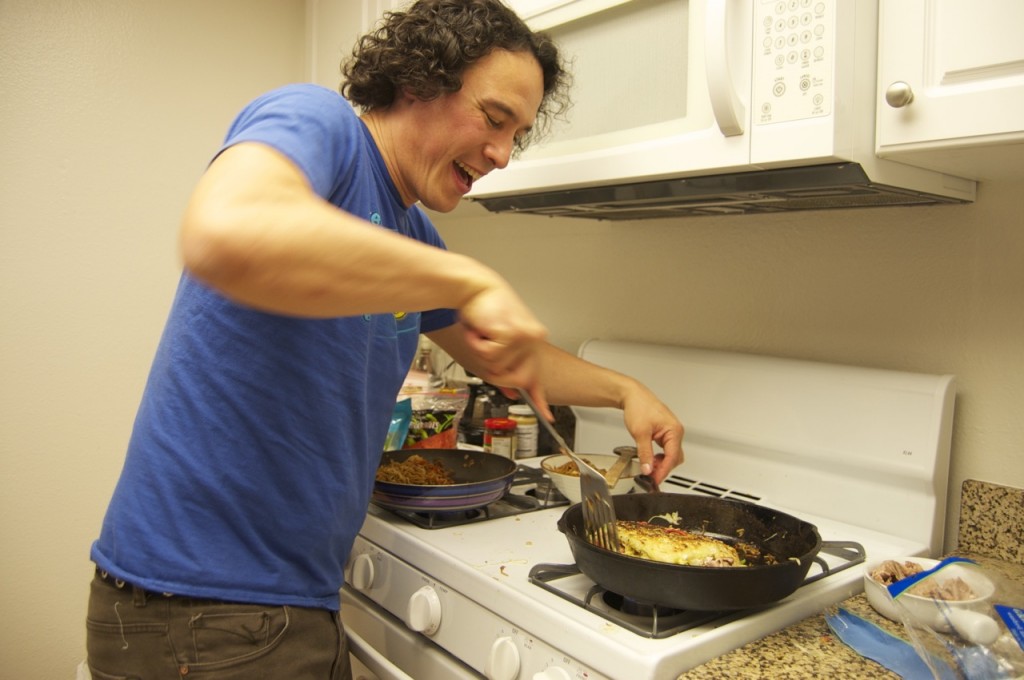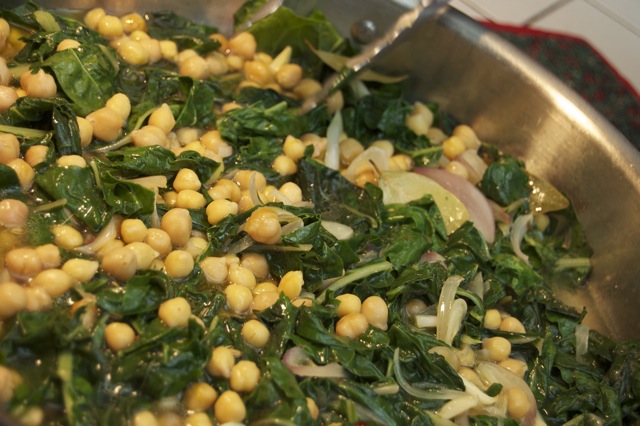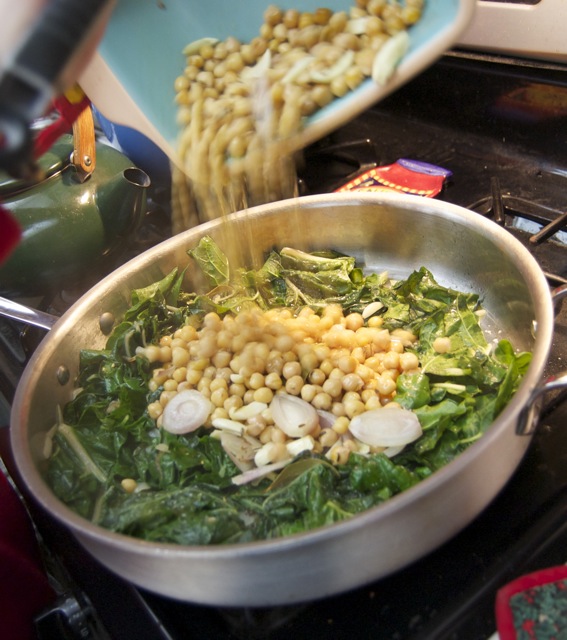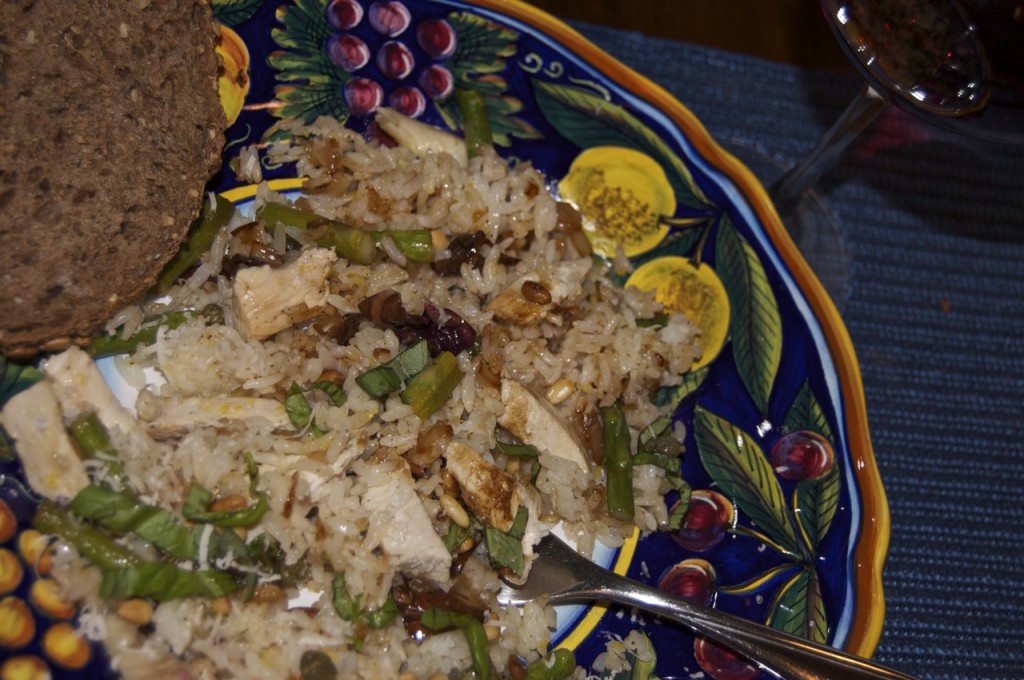This time last year I was in Thailand. I remember exactly when I was there, because Himself drew my valentine, scanned it and e-mailed it to me. Oh, I cried like a sap clutching that valentine on my iPhone screen in my hotel room in Bangkok! It was such an amazing trip all the way around (of course, it would have been better if he’d been there, too) that the memories of the scenery, the hospitality and the FOOD linger happily for me.
So it was a real treat and a nice remembrance of my visit to once again immerse myself in Thai cuisine, this time in the food of eastern Thailand. Himself and I joined our fellow Culinary Historians of Southern California for a visit to a private Thai garden, a Thai grocery and a Thai restaurant that treated us to a special dinner featuring the cuisine of the northeast, the area nestled in next to Laos and Cambodia.
This area, called Isaan, is one of the agriculturally poorer regions of the country, with low rainfall and insubstantial soil, so every scrap of food must be utilized. That’s why you find things on the menu that typically make Westerners blanch, things like crickets and worms. And many of the foods and ingredients are preserved in some fashion, including pickling, salting and drying, for future use. However, the people there don’t merely survive–they prevail in presenting a cuisine that is rich in flavor and diversity. This meal was a celebration of their culinary ingenuity.
At Lum-Ka-Naad in Northridge, our servers trotted out course after course, about a dozen in all. What follows is a brief sampling of what we had:
This seafood curry was cooked in a basket made from a banana leaf and topped with coconut milk, Thai chili pepper, fresh dill and Thai basil. It was rich, flavorful and loaded with lots of fat oysters.
As assortment of seafood, including scallops and squid, was steamed and served in a sweet-hot sauce made of kaffir lime, peanuts and Thai chili peppers. It was a good contrast to the richness of the previous dish.
Our dessert-in-the-middle-of-dinner was a bowl of rice vermicelli and fresh pineapple topped with coconut milk, Thai chili pepper and dried shrimp. We Westerners don’t usually make our desserts with hot and salty (and fishy!) components, but it all balanced out beautifully, with no flavor overpowering any other. As for those chili peppers, you’re seeing a pattern here, right? Thais love their super-hot chili peppers like Americans love their peanut butter.
These mackerel were laid over split sugar cane and steamed, so that the fish took on a light sweetness. They were served on a bed of greens and fresh herbs, including cilantro. That’s not merely garnish. All the fresh stuff on these plates is meant to be eaten along with the rich, cooked foods to provide a nice balance of heavy and light, along with an extra measure of flavor.
This is mackerel, too, heavily salted this time. It was my favorite dish, but because it was so intensely salted, I had to be content with just one bite. But it was a wooonderful bite. I agree with Himself: It was so rich in flavor and so dense in texture that it was a little like having a bite of a particularly good stinky cheese. A tiny bit satisfies.
If this looks like a plate of worms to you that’s because it is a plate of worms, silkworms to be precise. On the left side of the dish are fried pig intestines, which were more chewy than anything else. They needed a dredging through the Sriracha sauce to give them some flavor. But the silkworms were good all on their own, crunchy on the outside with a rich, smooth potato texture inside. While I’ve heard people make all sorts of claims as to their flavor, they seemed rather grassy to me (makes me wonder how many people have actually tried them). Silkworms are a great source of protein and fiber, which makes them a really smart food choice, especially when your choices are limited. (In case you’re wondering, no, they don’t have silk inside, so you can’t floss while you eat!)
Our beverage was a refreshing lightly sweet herbal drink loaded with basil seeds. When the seeds are moistened, they take on a gelatinous texture that reminded me of tiny boba.
And here’s Himself with our “road food,” a length of bamboo filled with sticky rice, sweet red beans and coconut milk. He has cracked open the bamboo to reveal the treat inside. It can be grilled, but if you’re traveling, just set the bamboo on your dashboard and let it cook during your trip! That would certainly be a nice change from the usual junk food stash so many of us throw into the car when we hit the road.
p.s. For the record, Himself received a valentine from me last year, too. I drew one on a napkin, decorated it with the fresh orchids in my hotel room, took a picture with my iPhone and e-mailed it to him.
Happy Valentine’s Day, no matter what country you’re in!


